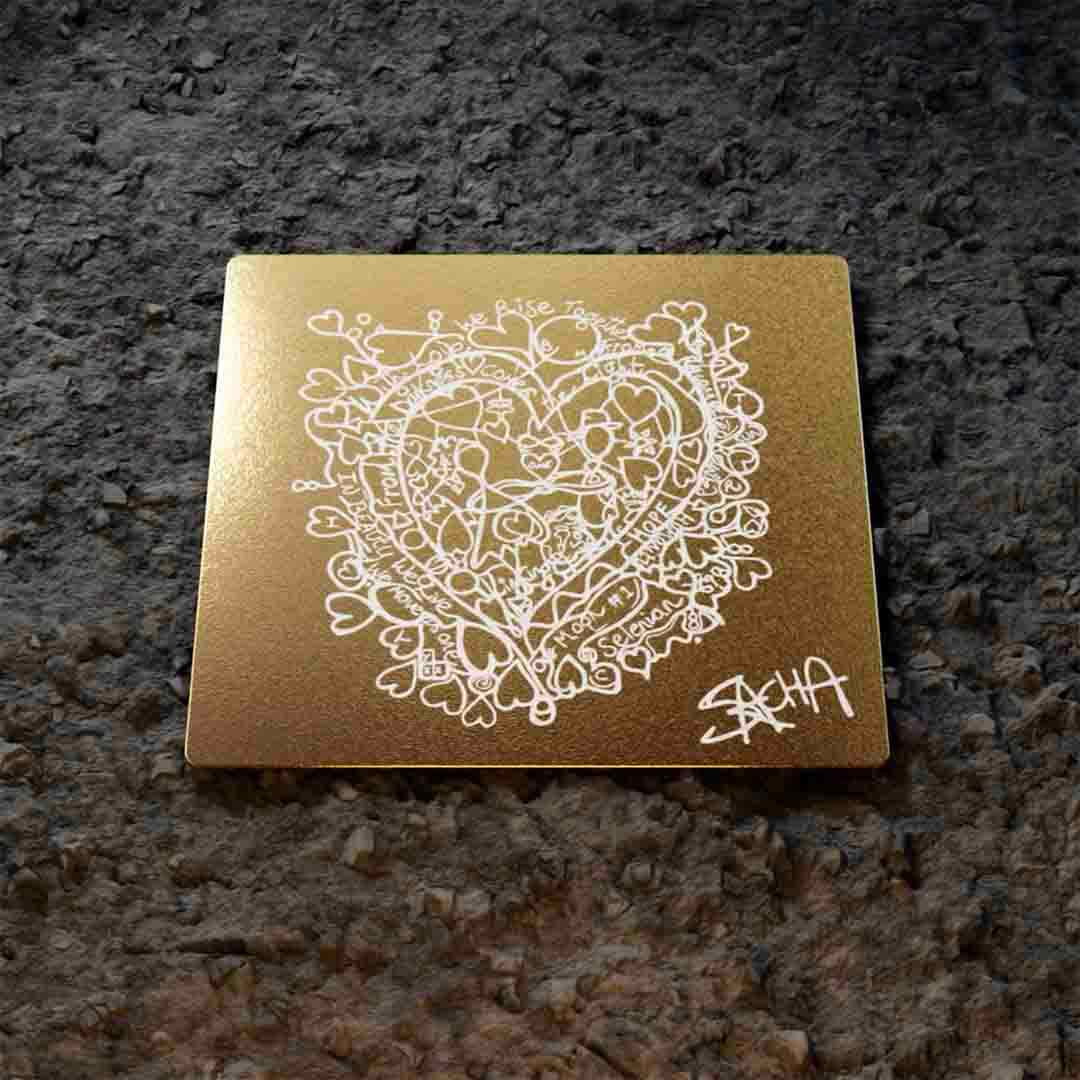- | 9:00 am
What went into making the world’s first lunar-resilient artwork
Sacha Jafri’s artwork took off for Moon earlier this month. As we await the lunar landing, the artist gives us an insight into the making of the plate.

On January 8, United Launch Alliance’s Vulcan Centaur launched on its first-ever flight, Cert-1, from Cape Canaveral Space Force Station in Florida. Atop the rocket was Astrobotic’s Peregrine moon lander carrying 20 customer payloads, including five NASA science instruments.
Peregrine’s mission is significant, especially for Dubai, as it carries with it a first. An artwork designed by Dubai-based artist Sacha Jafri. His artwork, We Rise Together with the Light of the Moon, was developed to withstand the extreme environment on the lunar surface while keeping the artwork intact.
However, subsequent reports about a propulsion system causing a critical loss of propellant have left doubt whether the actual landing would be possible.
As the news pours in – questioning whether the rocket would combust in the Earth’s atmosphere or have a crash landing on the Moon – Jafri tells us the likelihood of a hard landing seems like the only option.
“We are in a position where there was an issue at the beginning. Luckily, they’ve managed to recover the fuel loss; as the pressure decreases, the leak decreases. They were able to fix things remotely from Earth,” Jafri says.
He appears unfazed by the news. “They made an announcement that it’s most likely a hard landing. This means they will make it to that point of descent; as it (the spacecraft) goes down, most of the scientific payloads will sadly be destroyed on impact. Some might make it so they can take data from the Moon.”
“My artwork, the plate, will survive because it was designed to survive,” he adds.
THE ARTWORK
Two years in the works, the artwork, a moon-resilient aerospace-grade plate, took Spacebit over two years of testing to confirm that it would last eternally on the Moon.
Made of metals from the nose of the rocket, gold, aluminum, and other metals, the 12-inch plate is lunar-resilient, which is a mammoth accomplishment. “The actual components are a secret”.
He explains it was built to withstand the Moon’s extreme conditions, including radiation, issues with gravity, extreme temperatures, and meteorites. “This plate was tested on several cases which included interestingly, and importantly, a hard landing,” he says.
Imagine having to design a motif representative of humanity. For Jafri, the process had its challenges.
“There were restrictions since I’m not used to etching into a metal alloy,” he says.
The plate is etched with a heart motif central to Jafri’s works, depicting a reconnected humanity, with two central figures holding hands, entwined with love and empathy, as they rotate within a flourishing new world. It symbolizes “Our world as it could be,” he says.

Courtesy: Sacha Jafri
He says that hidden within his etching is something special that would mark Dubai on the Moon. “It’s my gift and symbol of adoration to Sheikh Mohammed bin Rashid Al Maktoum, who is passionate about space.”
“But I won’t say what it is,” he quips.

A special symbol for Dubai. Courtesy: Sacha Jafri
Upon closer inspection, on the top right of the heart, he has etched a landmark integral to Dubai’s architecture that leaves one with a smile and pride.
Dealing with a new medium was integral to the process.
“I had two attempts to laser etch, which is very difficult. The whole point of the plate is it can withstand major impact; if it’s exposed to 200 degrees of heat, it won’t melt. If it hits temperatures of minus 190 at night, it won’t crack. Which is why it was difficult to etch into, but we managed to do it.”
The result was this iridescent powdery white art piece. “The etch is just the natural color underneath the gold coming through, almost like the moon’s surface, which is quite cool.”
Speaking about the process, he says he initially felt a little artistic restrictions due to the metal alloy plate. “But then, as I developed the artwork and had two or three tries of getting it onto the plate, I enjoyed it and didn’t feel restricted by the end.”
A guiding light for Jafri through the process was the end goal of the landing on the Moon. “I thought if my work landed on the Moon, shining through my artwork and emitting this energy, it would change consciousness and rewire humanity. That’s what I hope it can stand for.”
Overall, he says the entire debacle with its developments has proved that landing on the Moon is a big deal. “Actually, it’s hard; that’s why the intrepidation of this mission, things going wrong, makes it more real and exciting.”
Update: Astrobotic has announced Peregrine will be directed to re-enter Earth’s atmosphere and burn up. Despite engineers stabilizing the situation, the loss of oxidizer rendered a safe lunar surface touchdown impossible. The company has opted to dispose off the craft to prevent potential collision hazards in space.
Delve deeper into the design-thinking process and global design trends, encompassing urban planning, biophilic design, immersive technologies, and more, at the Innovation By Design Summit, partnered with Msheireb Properties, in Doha on April 24. Attendance at the Innovation by Design Summit is by invitation only. Delegates can register here to receive their exclusive invite.





































